See How AI Models Talk About Your Brand (Step-by-Step Guide)

by Ankit Singla
Disclosure: We’re reader-supported. When you buy through links on our site, we earn a commission at no cost to you.
With Artificial Intelligence (AI) tools on the rise, more and more businesses are starting to pay attention to how their brand is perceived by Large Language Models (LLMs).
Think about it — whether through tools like ChatGPT or search features like AI Overview, more and more people rely on AI-generated information to research brands online.
In this post, we’ll show you how to unveil what AI says about your brand.
While you can do it with a variety of Search Engine Optimization (SEO) platforms with AI tools, this guide focuses on my favorite platform of all time: AI Visibility Toolkit by Semrush.
Let’s get started.
How to See How AI Talks About Your Brand with Semrush
Tip: You can start by creating a free Semrush SEO Toolkit trial to get familiar with its powerful features. For full access to AI-driven capabilities, the Semrush AI Visibility Toolkit is a separate purchase.
Here are the steps to easily reveal insights about your brand mentions in AI:
1. Fire Up the Semrush AI Visibility Toolkit
The Semrush AI Visibility Toolkit is my go-to platform whenever I’m wondering what AI says about my brand.
First things first, fire up the AI Visibility Toolkit by clicking ‘AI SEO’ from the main dashboard.
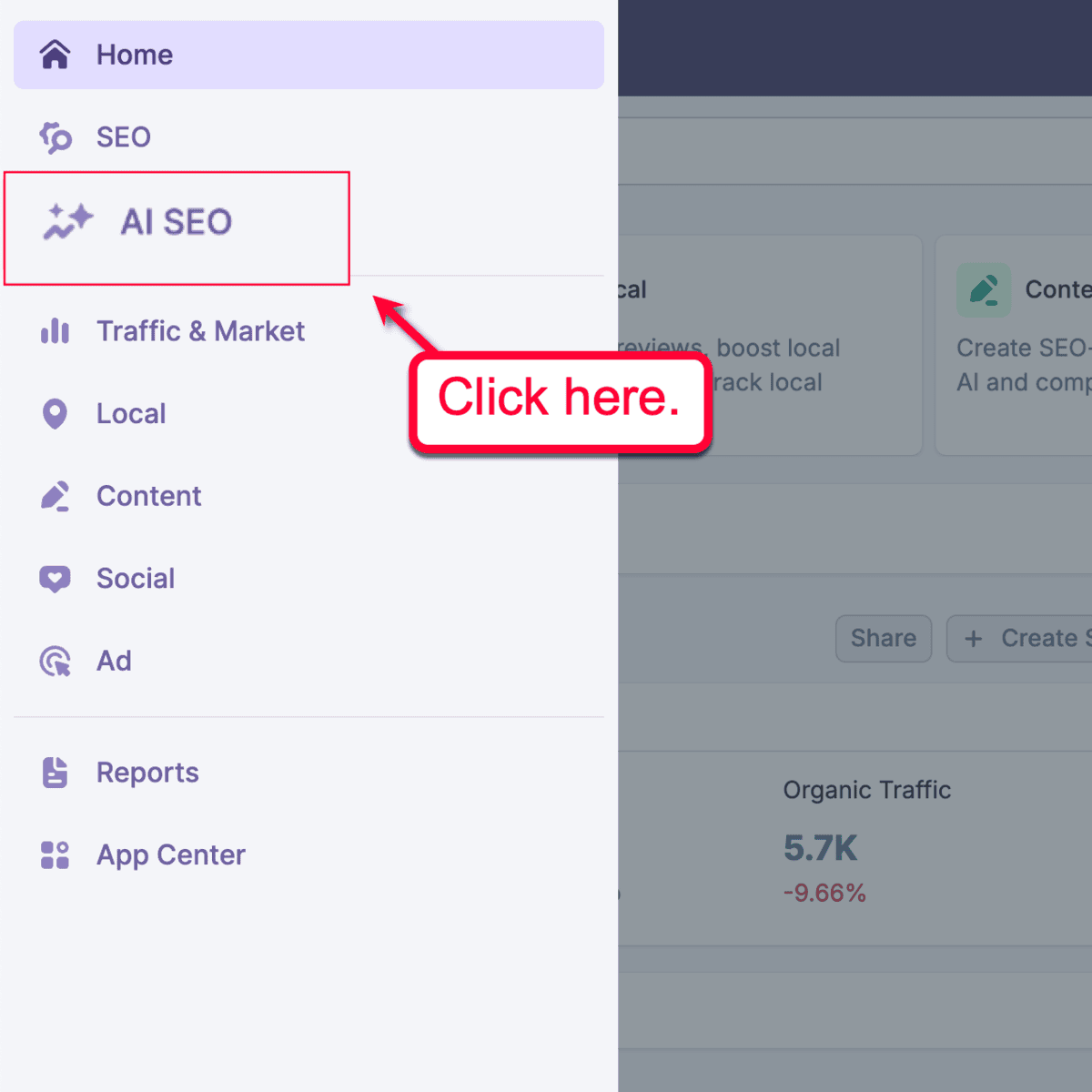
This will take you to the AI SEO submenu, which lists all of the cool features for conducting thorough research of your brand’s reputation in LLMs.
Here’s a quick overview of these features (we’ll go through all of them later):
- Brand Performance — Evaluate how AI platforms describe your brand and determine your visibility. We’ll be working with this tool a lot for unearthing how AI engines talk about you.
- Visibility Overview — Learn more about the prompts or queries that pull up your brand in AI tools. This also reveals queries where your brand is relevant, but is also absent.
- Prompt Tracking — An add-on to Semrush’s classic Position Tracking tool. This will give you a quick overview of your visibility in your target AI prompts (similar to target keywords).
2. Run the Visibility Overview Tool
Under the “AI Analysis” section, click ‘Visibility Overview.’
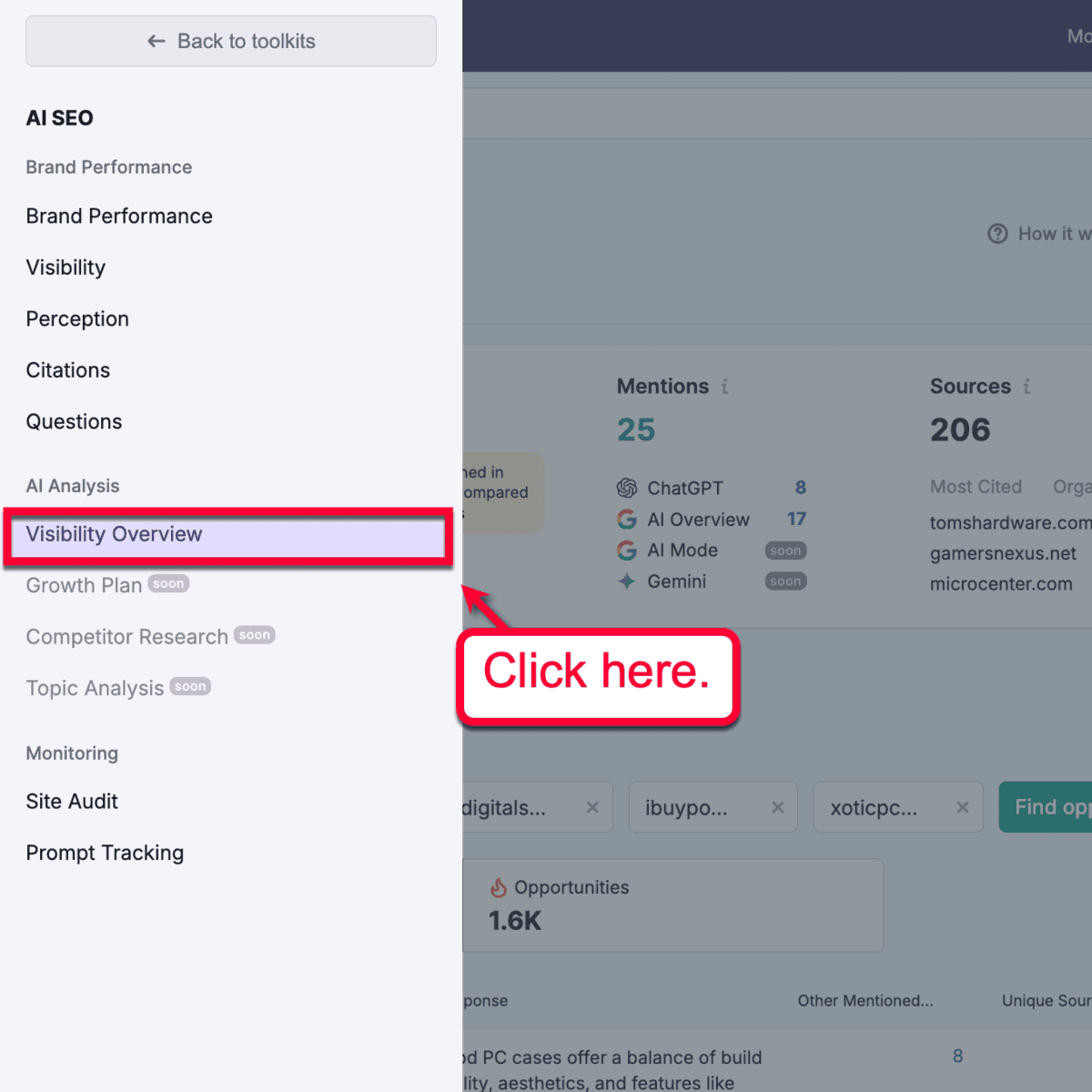
Enter your domain and click ‘Analyze’ to begin searching LLMs for mentions of your brand.

Depending on the popularity of your brand and your reach, it may take anywhere between a few seconds and a couple of minutes to compile the results.
When done, you’re greeted by an overview panel of your overall AI visibility. This includes the total number of mentions across major AI tools, the most cited sources, and your overall AI visibility score.
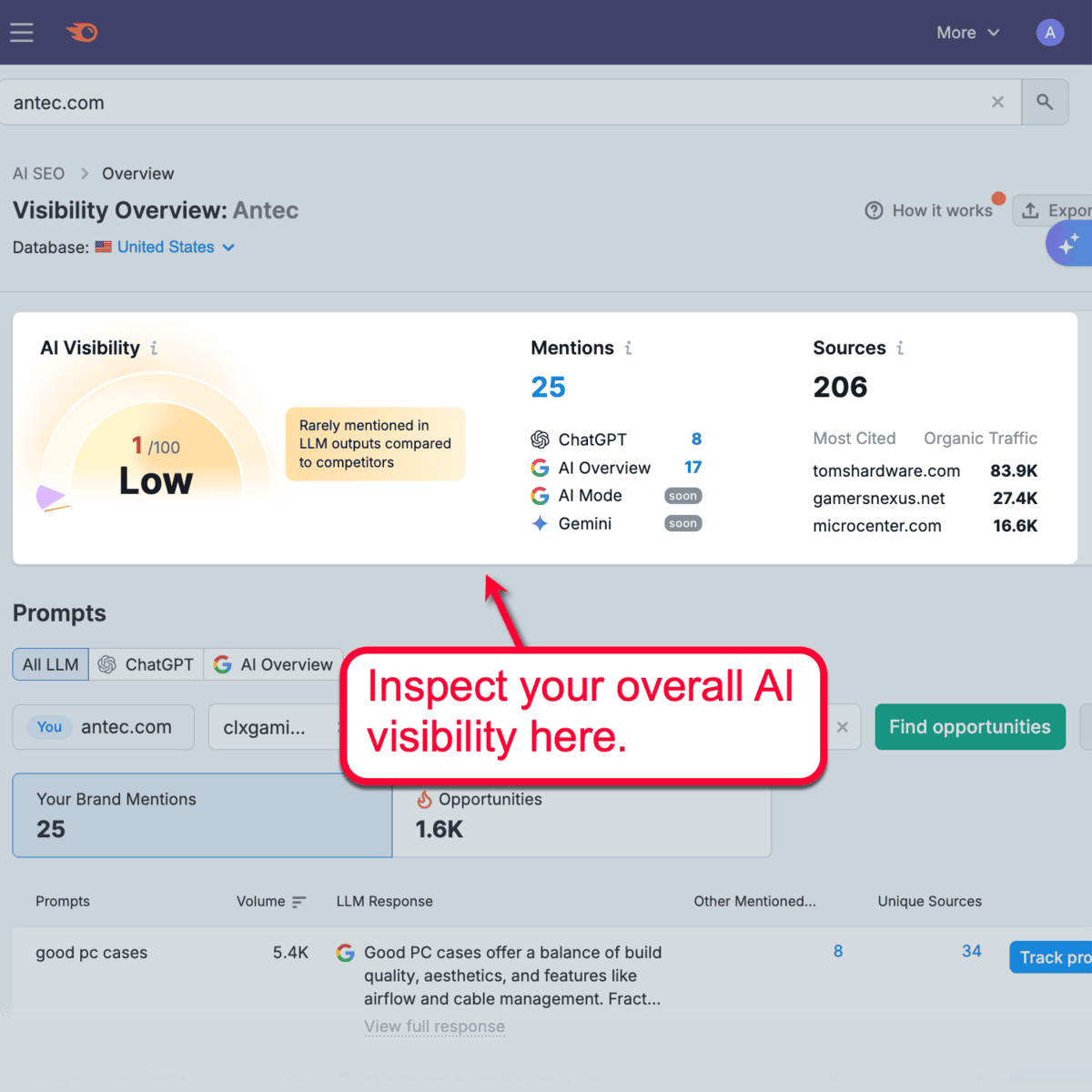
3. Check AI Prompts and Responses
Scrolling down to the “Prompts” section, you’ll find out exactly what users are searching for whenever your brand appears in AI threads.
More importantly, you can investigate what LLMs are saying about you — both good and bad.
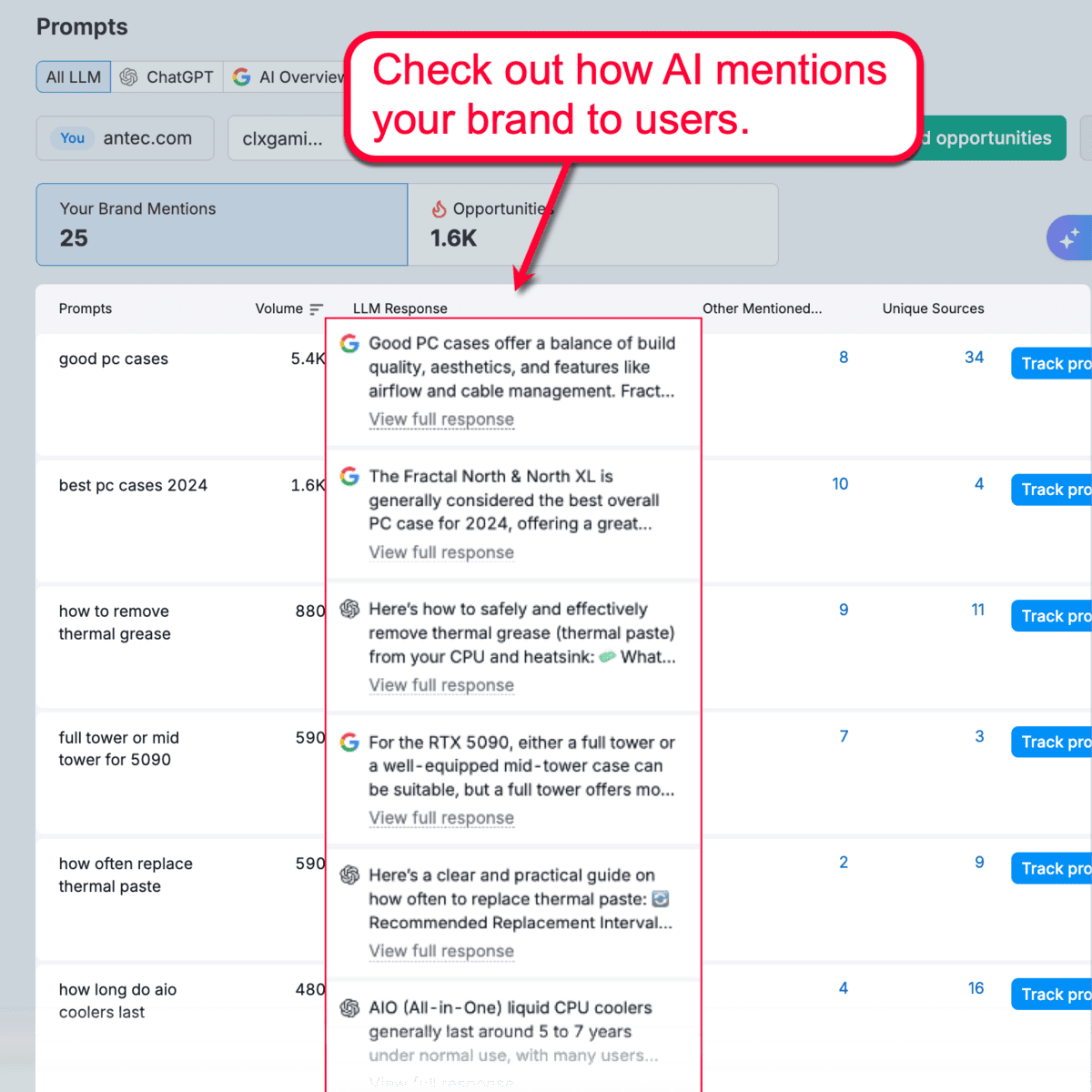
To read the full AI response, click ‘View full response’ under the preview.
This will give you a deeper understanding of how AI and, by extension, users perceive your brand.

If you’re lucky, you’ll find your brand or product surrounded by positive praise.
For example, here’s what LLMs say about Antec for the query, “good PC cases”:

Just remember that AI responses are often nuanced.
In some cases, you might find a few negative things about your brand — but that doesn’t necessarily mean the AI response is unfavorable.
For example, here are a few not-so-wonderful things Gemini said about Antec’s PC case:
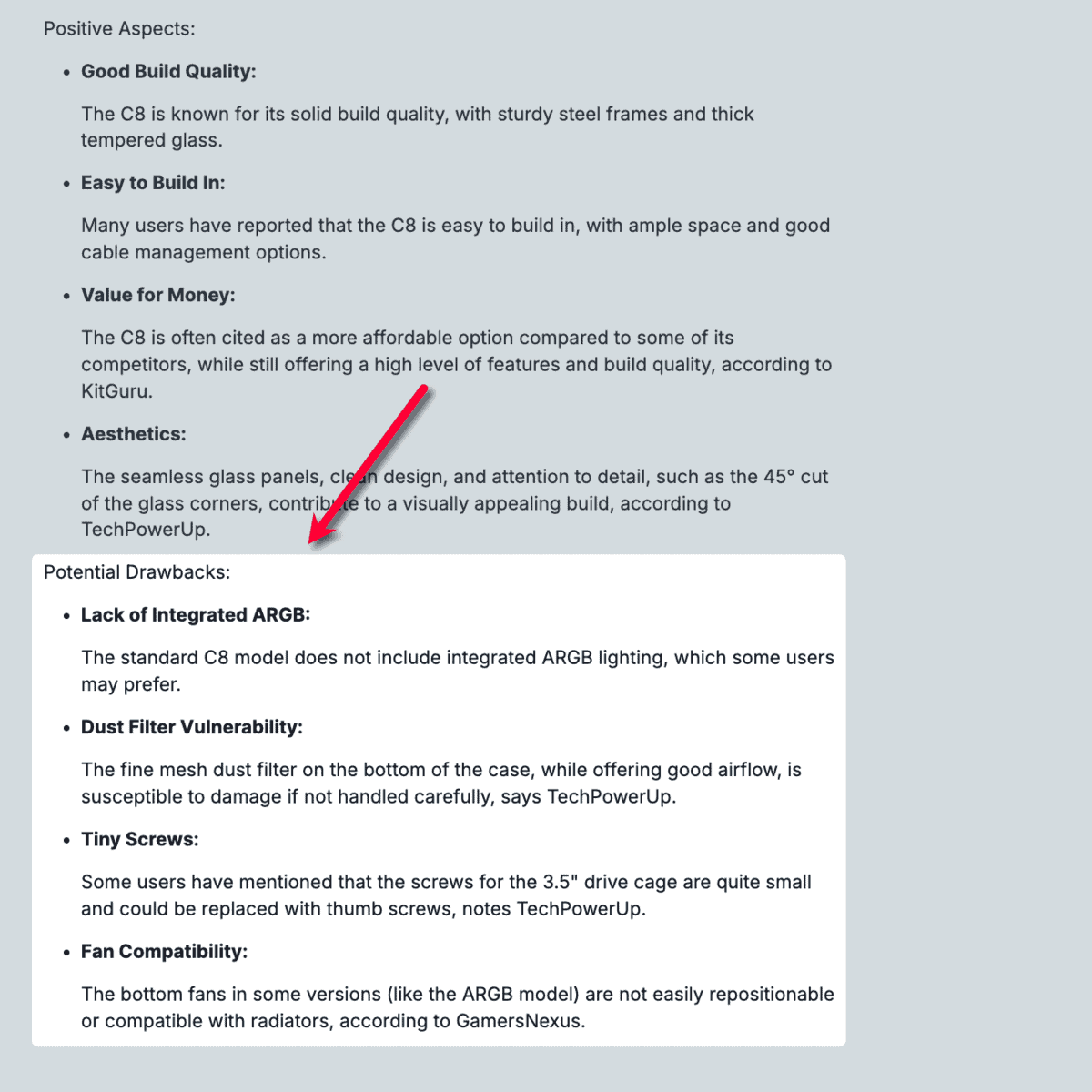
4. Track the Prompt
What makes the Semrush AI Visibility Toolkit special is that it helps you immediately turn information into action plans.
After you find a relevant prompt you’d like to optimize for, click ‘Track prompt’ under the right-most column.

To set up prompt tracking, start by specifying the AI platforms you want to optimize for. By default, both ChatGPT and Gemini (Google) are selected, but you can add more by clicking ‘Add target.’
In the meantime, you can also add more prompts to your tracker by entering them in the field below.

With these steps done, click ‘Start Tracking’ to get the prompt monitoring underway. Remember that this will integrate your target prompts to Semrush’s core “Position Tracking” tool, which offers a consolidated dashboard for your Answer Engine Optimization (AEO) and SEO analytics.
Apart from monitoring metrics, you can also add more prompts or keywords to track, conduct competitive research, diagnose cannibalization (when your own pages compete for the same keyword), and more.

Why is this important?
By consolidating your rank tracking (for both SEO and AEO) in one place, it’s much easier to determine which of your strategies are working (and which aren’t).
But now that you got your tracker set up, it’s time to develop a game plan to improve your brand image in AI platforms.
5. Enter Your Domain in the Brand Performance Tool
Want to learn more about your brand’s presence in AI search?
Go ahead and select ‘Brand Performance’ in the AI SEO submenu.
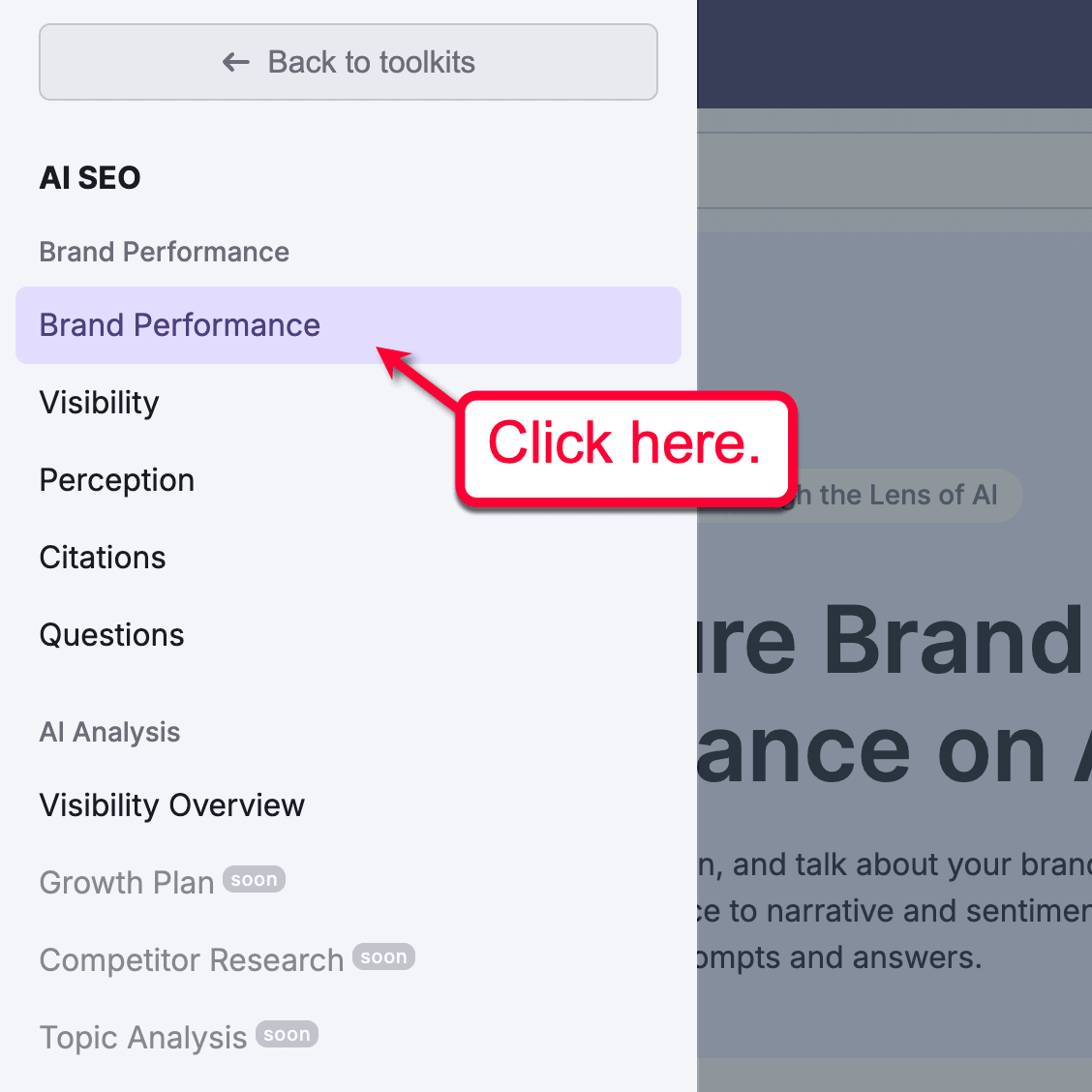
On the Brand Performance tool page, enter your domain and click ‘Analyze’ to proceed.
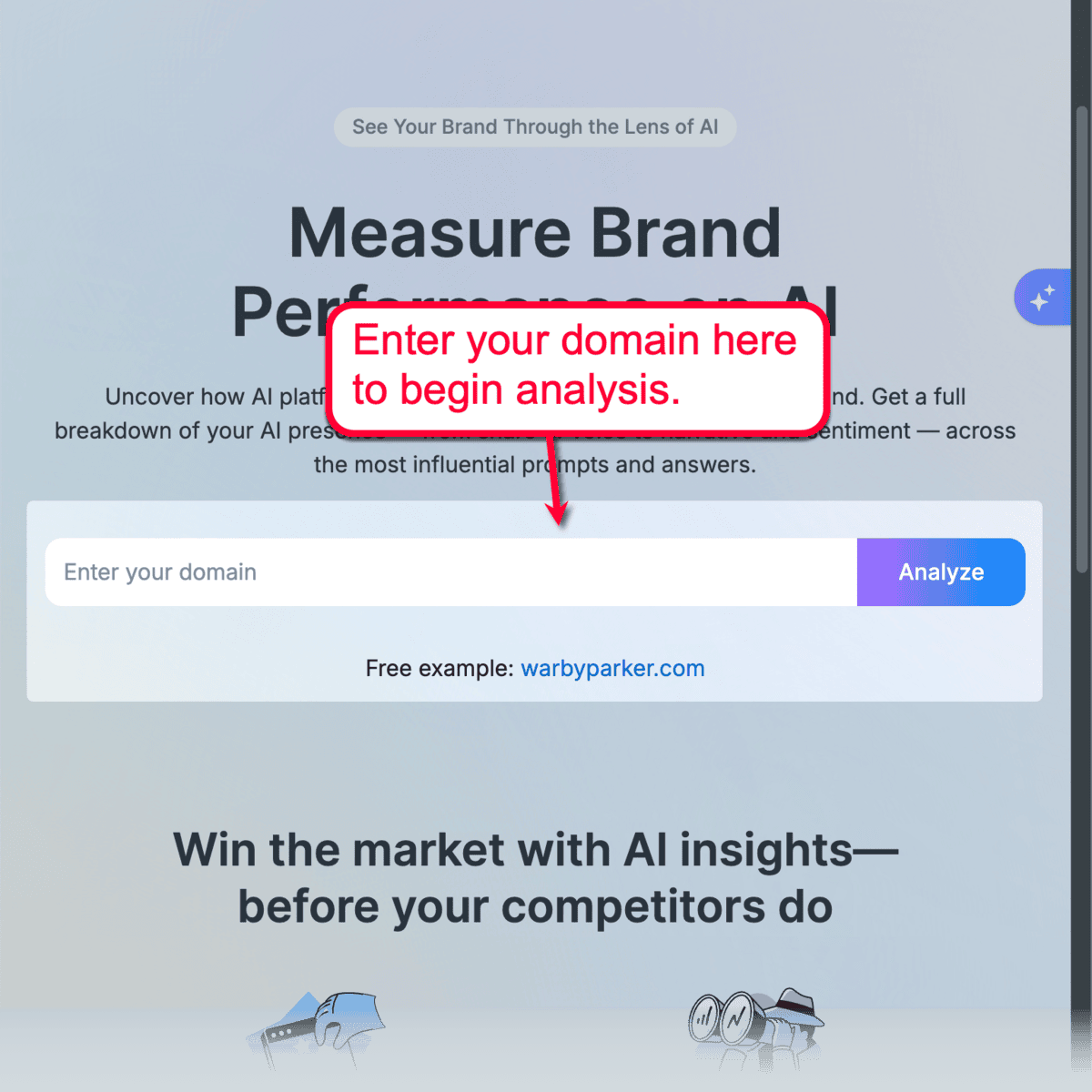
The next step is to specify your target location and languages. Just select the right option in the drop-down menus and click ‘Get started.’
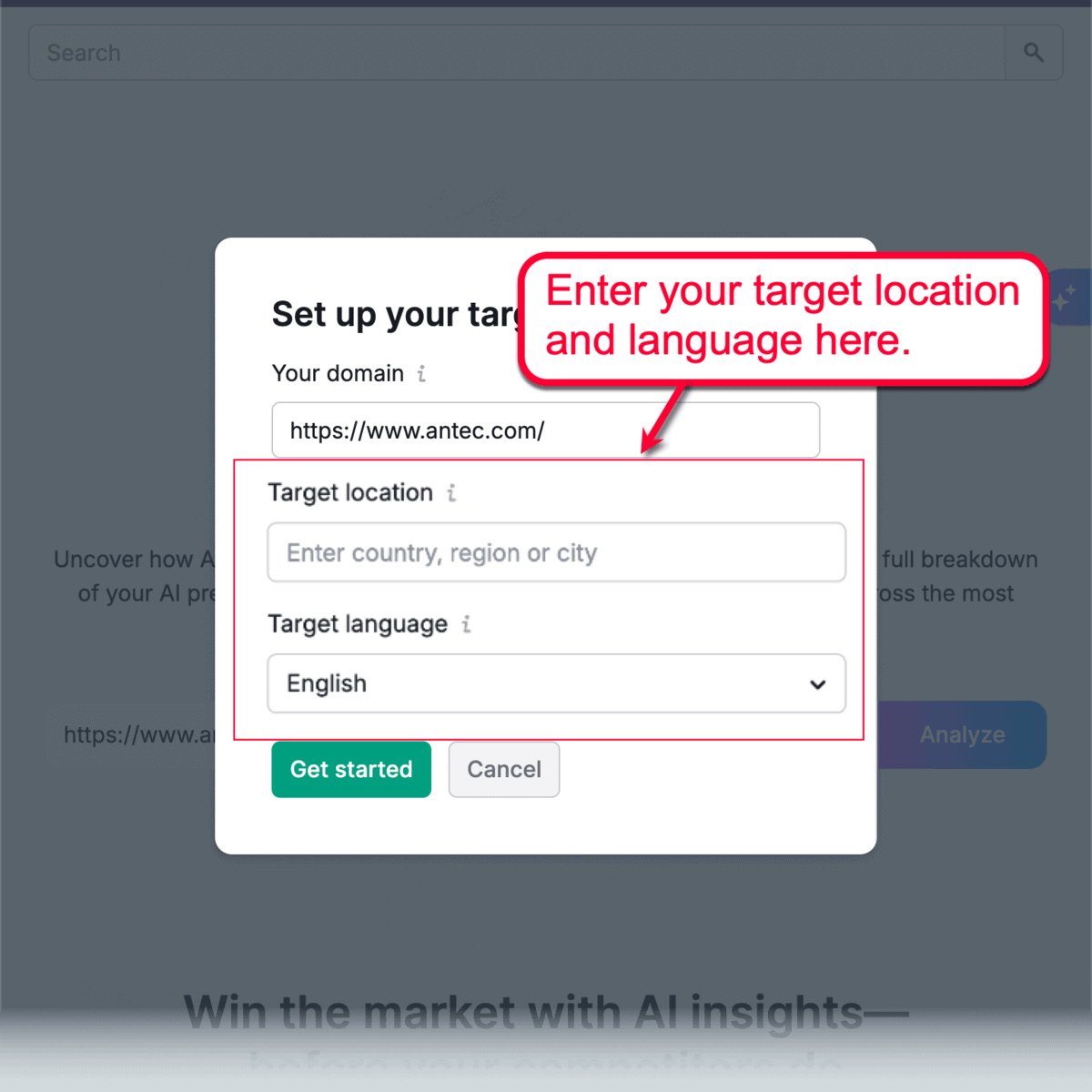
Tip: If you’re an international company, select ‘Worldwide’ as your target location. This ensures you don’t miss out on potential brand mentions by AI, which could be affecting how your foreign audience perceives your brand.
6. Compare Your Visibility with Competitors
It may take a few minutes before Semrush can pull up your records from LLMs.
Right off the bat, Semrush starts you off with AI-generated suggestions that will help optimize your AI presence — but we’ll get there later.
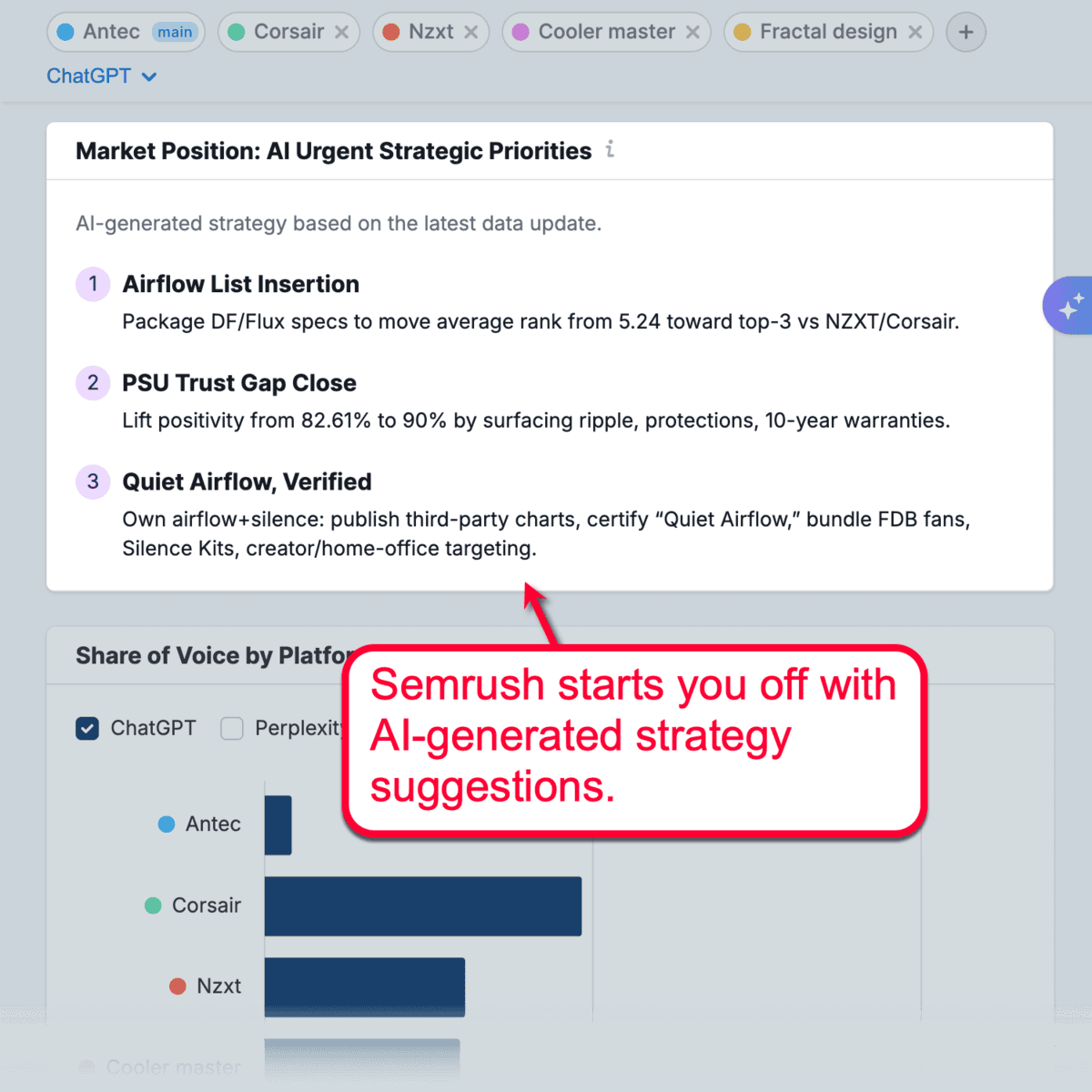
What we need to do right now is a quick analysis of your brand’s presence in AI-based research.
Under “Share of Voice by Platform,” you’ll start to get an idea of your brand’s performance relative to competitors. Feel free to check or uncheck AI platforms to refine your analysis.
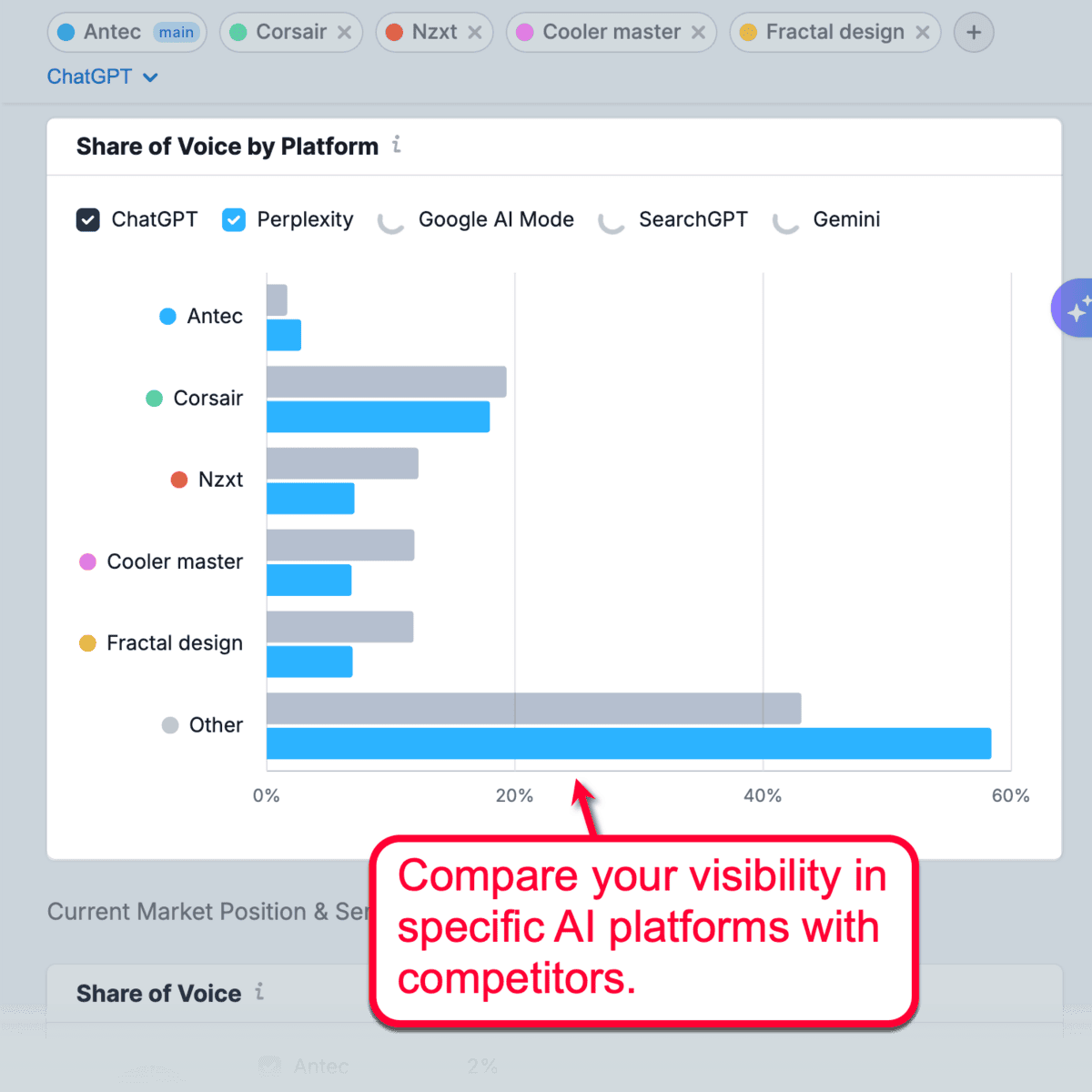
You can also inspect how your presence in LLMs improves (or decreases) over time. Hover over the timeline for a closer inspection of your presence and that of your competitors.

Tip: You can add more competitors by clicking the “plus” button in the top toolbar. This will allow you to compare your AEO performance with specific competitors.
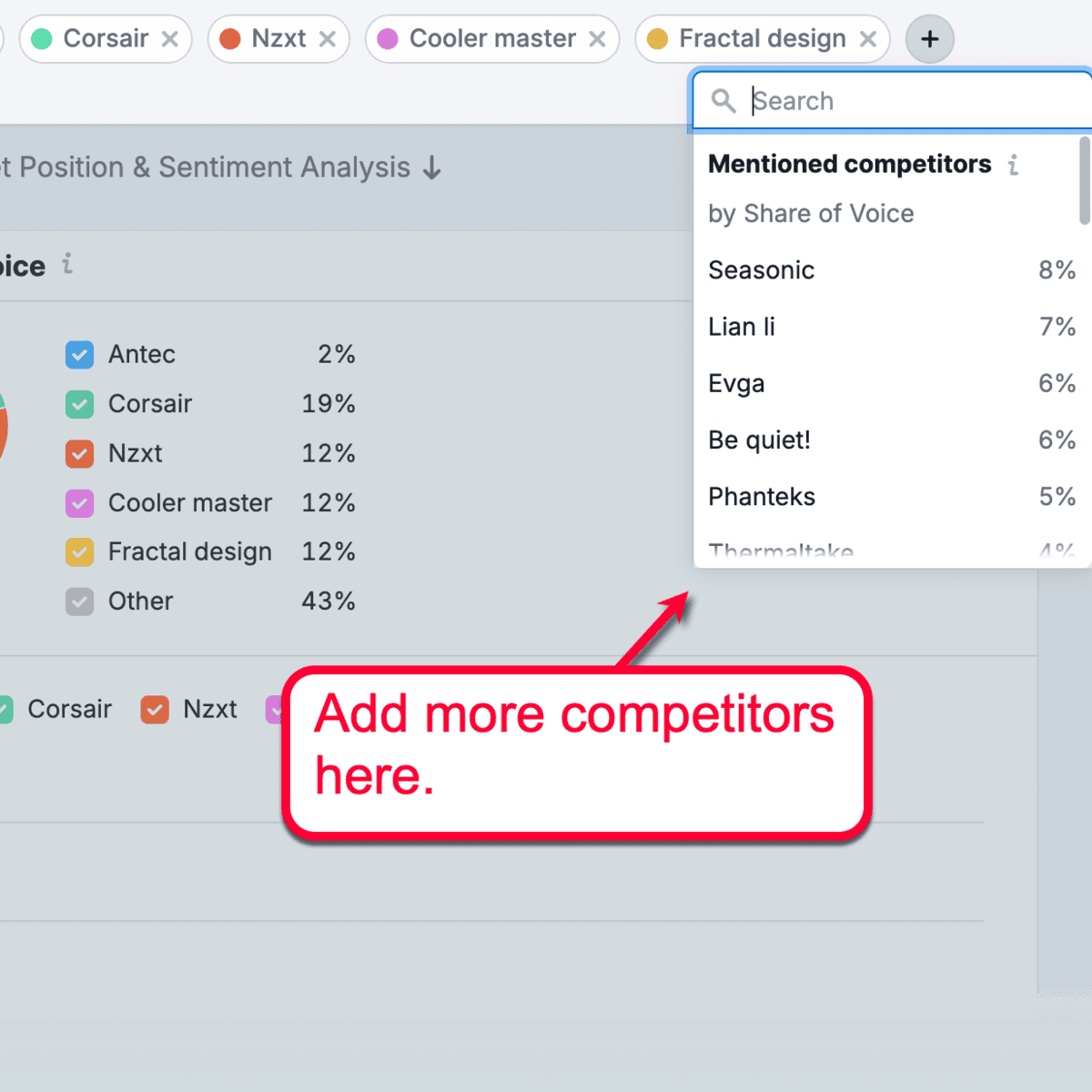
7. Analyze User Sentiment
Next comes the juicy stuff — mapping your visibility in AI prompts while also understanding how your brand is presented in terms of strengths and weaknesses.
Under “Share of Voice vs. Sentiment,” you’ll find a general rating of your AI visibility and sentiment score.

You can take a closer look at your sentiment score in the “Overall Sentiment” section.
Basically, it measures the breakdown of favorable and not-so-positive AI mentions of your brand.
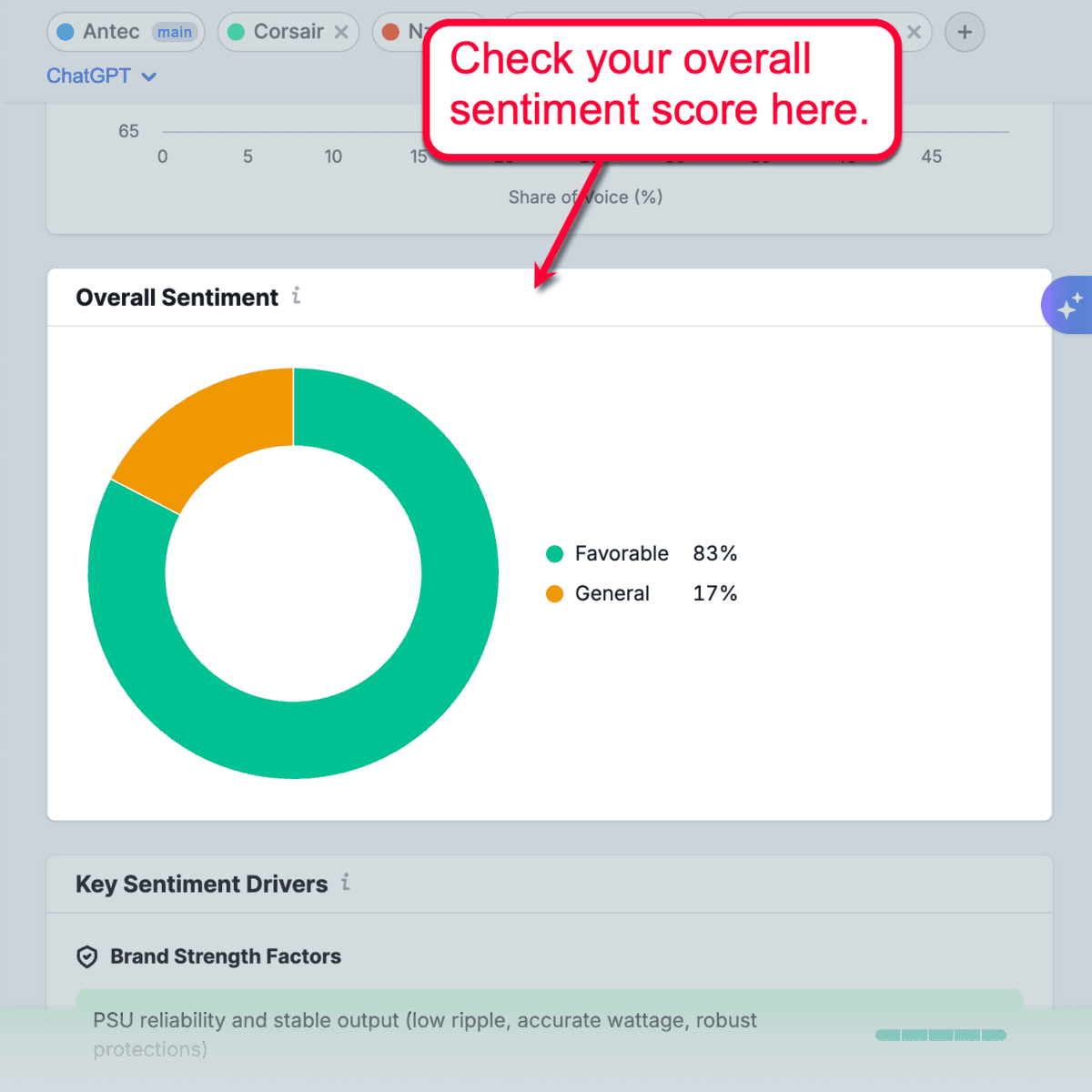
Curious about the reasons behind your overall sentiment score?
Under “Key Sentiment Drivers,” you’ll find all the aspects of your brand that are frequently mentioned as a positive by LLMs — including, of course, the possible areas of improvement.

These strength factors and areas for improvement reflect how AI engines talk about your brand with users.
The higher they are on the list, the more prominent their impact is on your brand’s performance.
8. Review Recommendations
At the bottom of the Brand Performance report, you’ll get a glimpse of Semrush’s AI-driven strategy capabilities.
Under “AI Strategic Opportunities,” Semrush practically serves actionable recommendations on a silver platter.
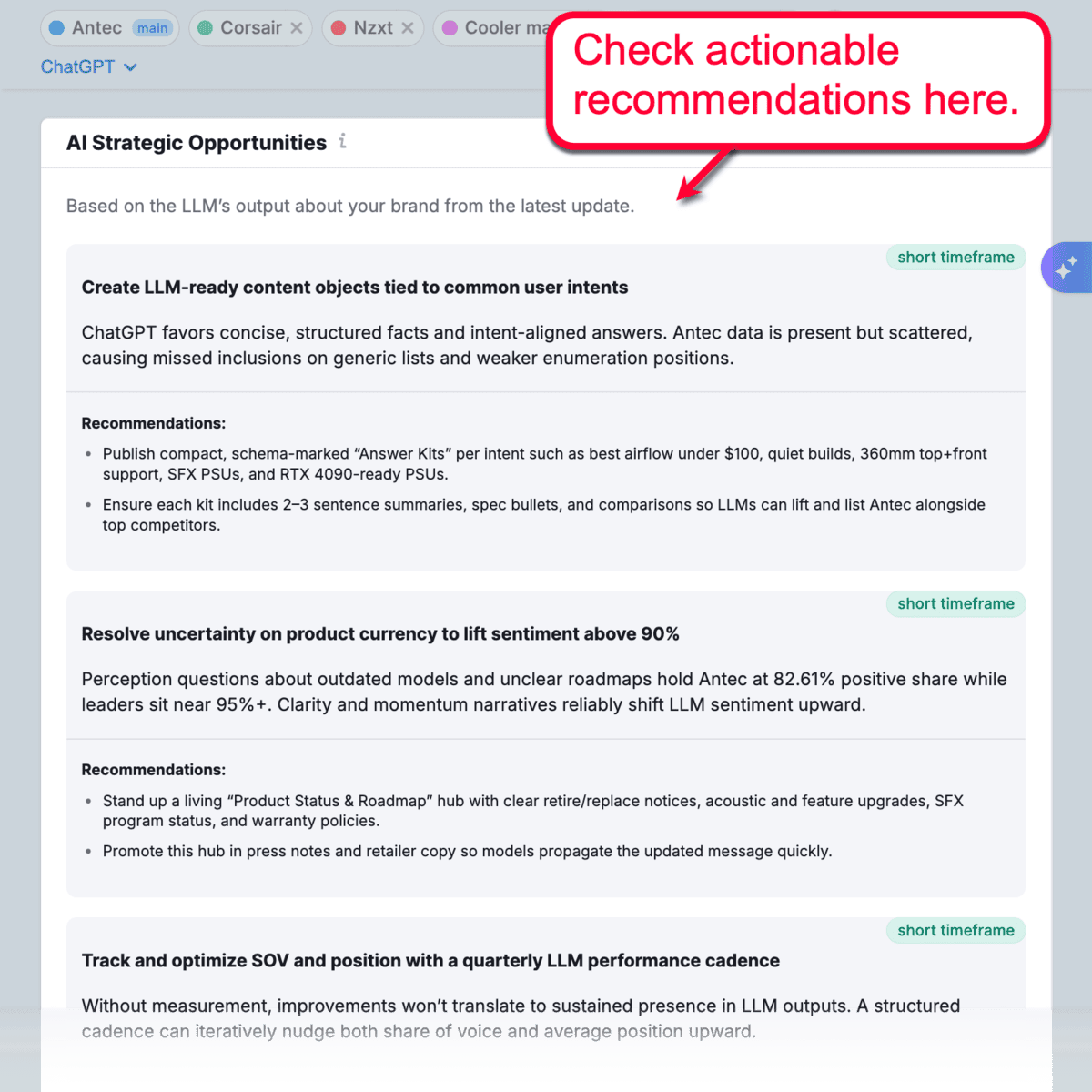
This is, of course, just the beginning.
For example, if you visit the “Visibility” report section of the AI SEO tool, you can get actionable recommendations that will make your brand appear more frequently in AI-generated answers.

If you head over to the “Perception” report, you’ll find AI-powered strategies for improving sentiment around your brand.
I recommend checking out the “Competitive Perception by Platform” section to gauge positive sentiment across popular AI tools, like Gemini, ChatGPT, and Perplexity — and how you compare against competitors.
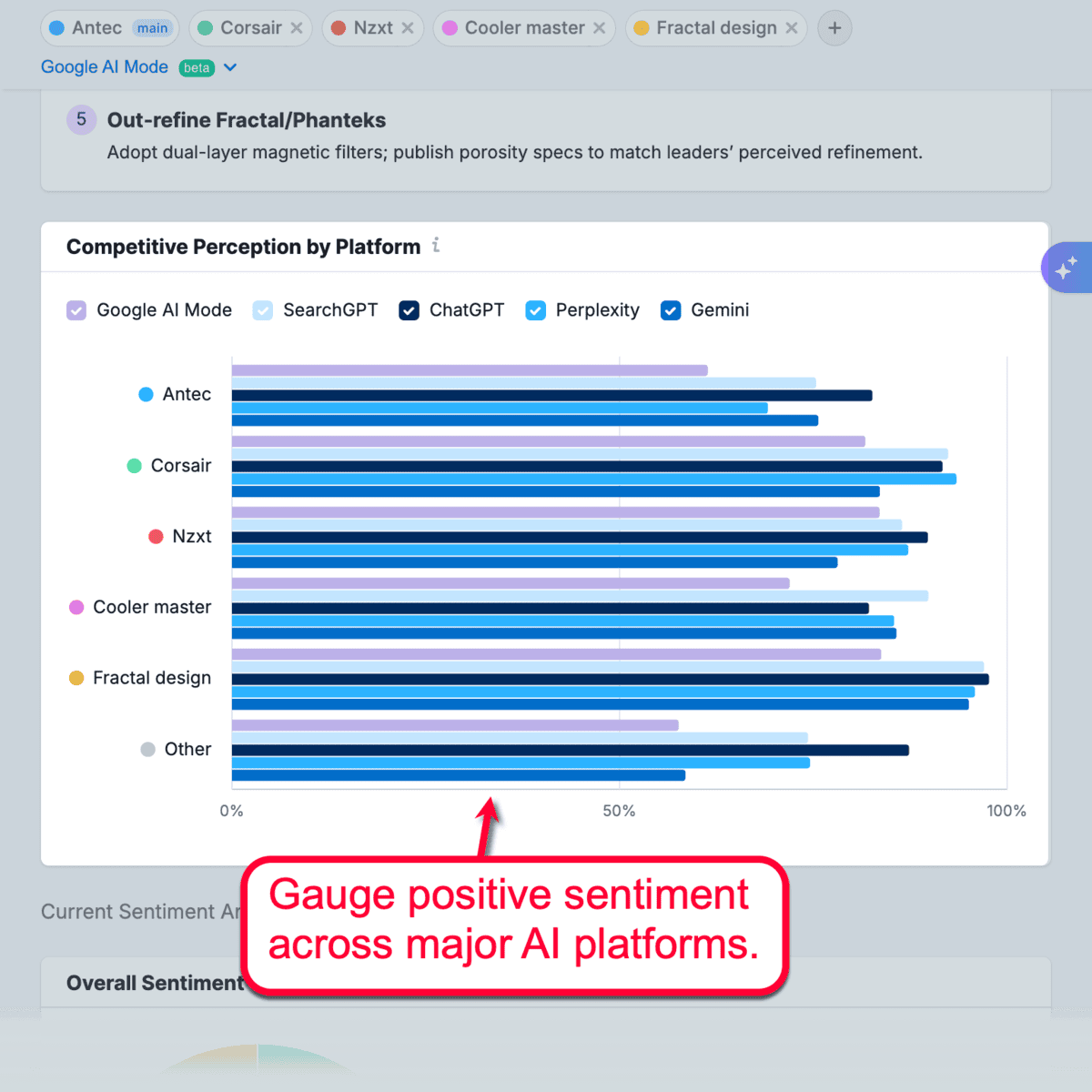
Here’s a tip: Always look at the list of improvement opportunities included in most reports.
Knowing your brand’s strengths is definitely useful, but being aware of and acting upon your weaknesses will have a much bigger impact on your brand image.
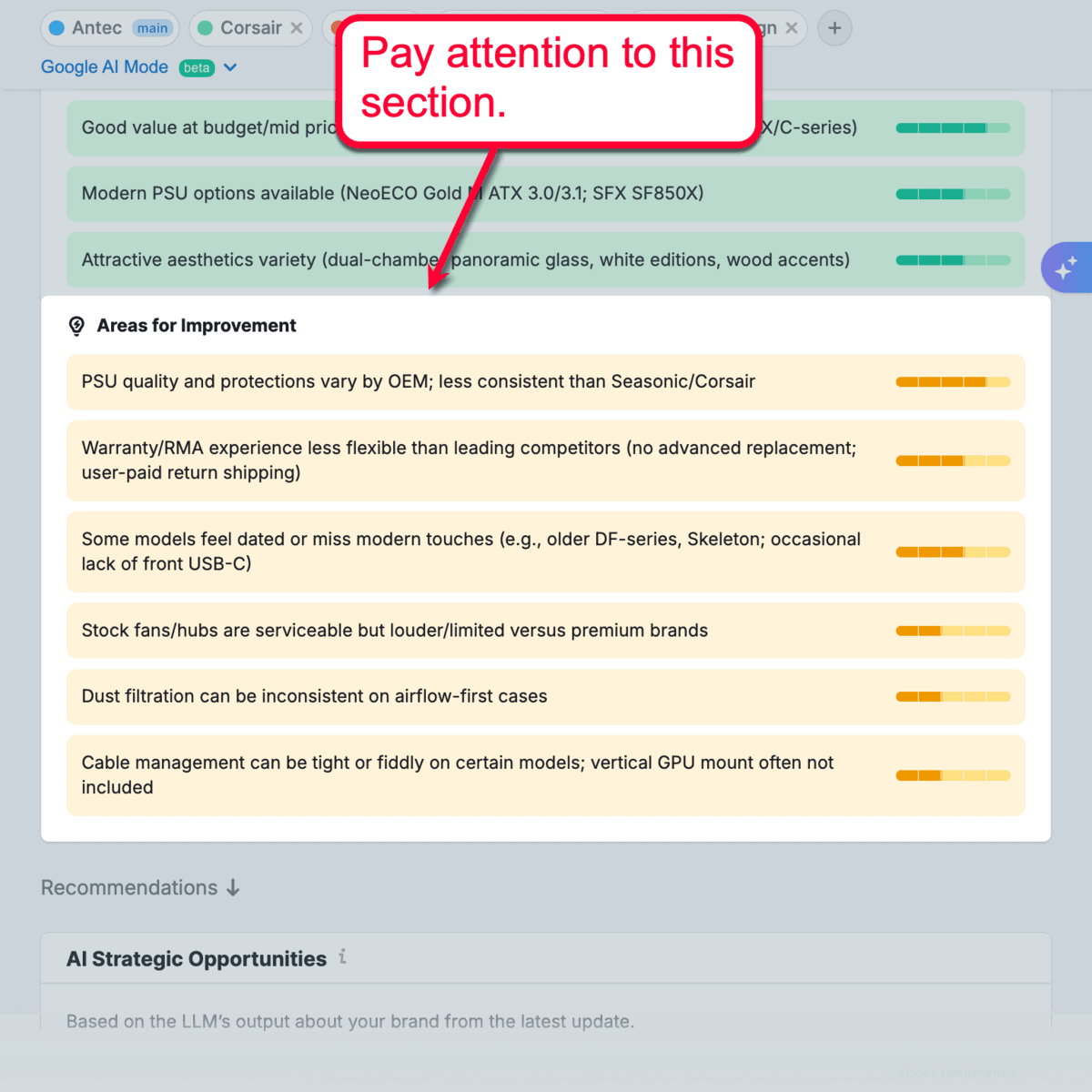
9. Identify Your Top Cited Pages
AI tools often cite relevant pages when responding to user questions.
By navigating to the “Citations” report, you can learn more about how often your page gets pulled up — and which specific pages get attention.
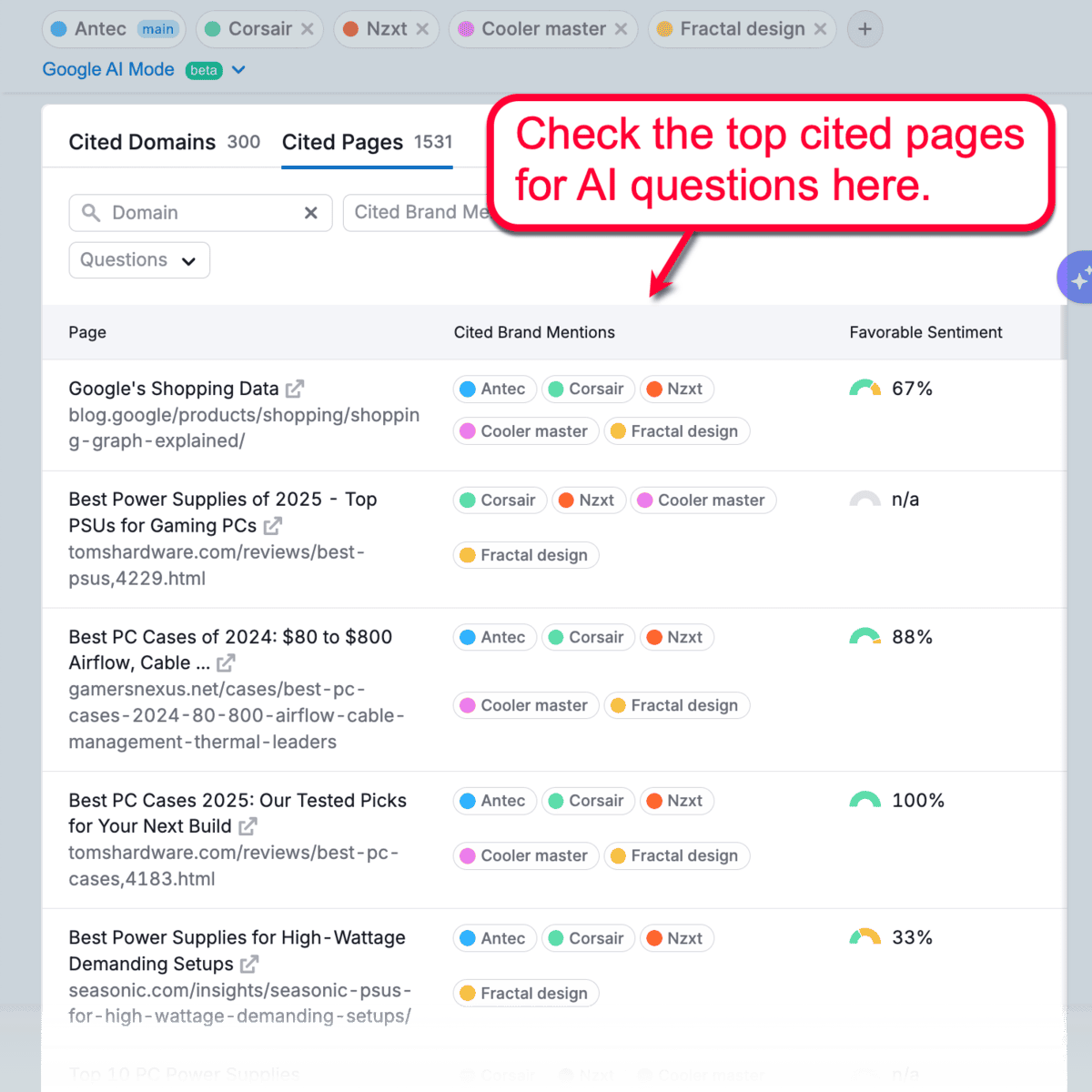
This list also includes the percentage of favorable sentiment alongside other cited competitors.
Don’t forget to check the actionable, AI-powered strategy recommendations that will not only help you get more citations, but also increase favorable sentiment.
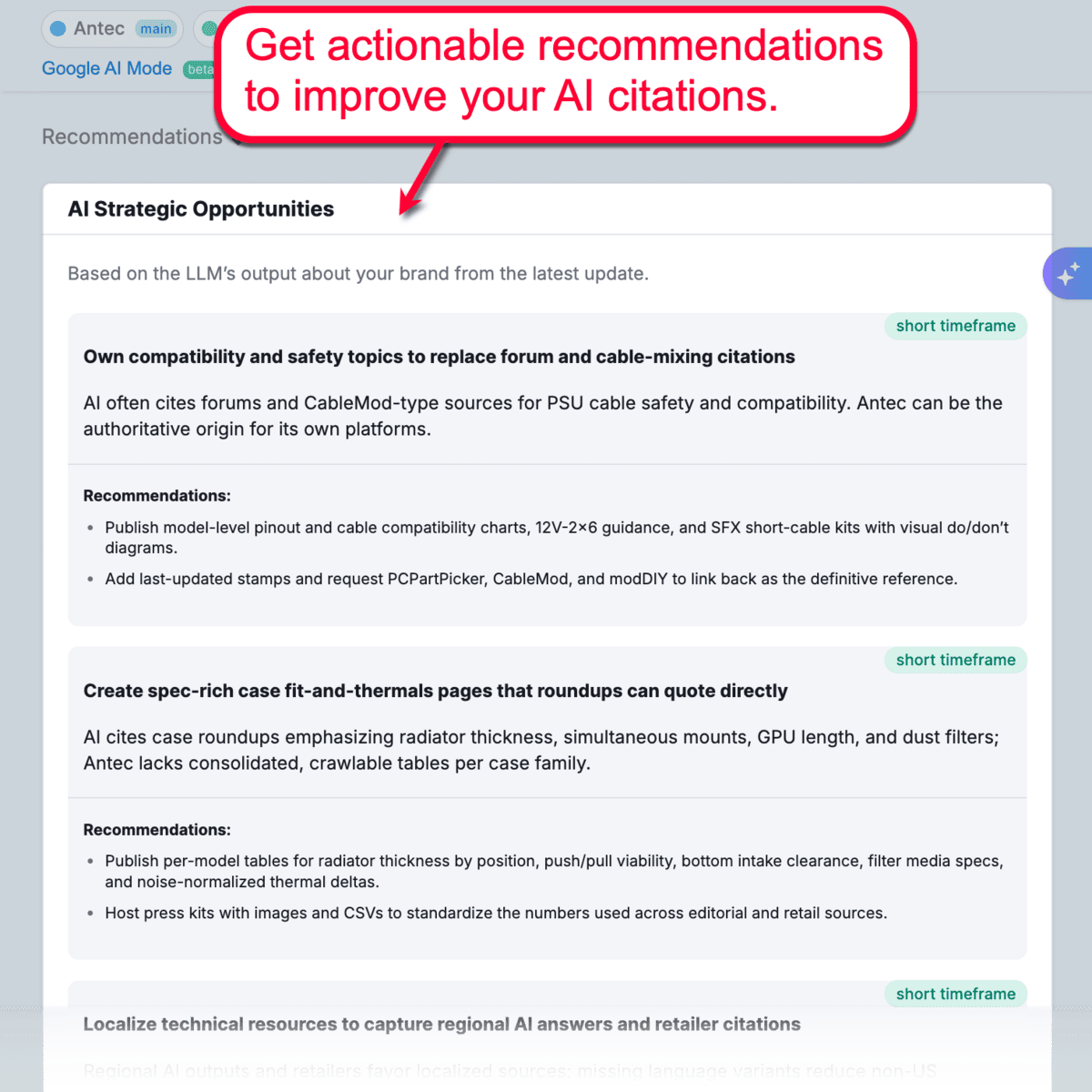
10. Discover Which AI Queries Lead to Your Brand
Perhaps one of the biggest advantages of Semrush’s AI Visibility Toolkit is how it also reveals the top queries that make AI tools mention your brand.
In the “Questions” section of the report, you start off with quick target audience and content recommendations. A little further and you’ll come across the top topics and intents that lead to your brand in AI responses.
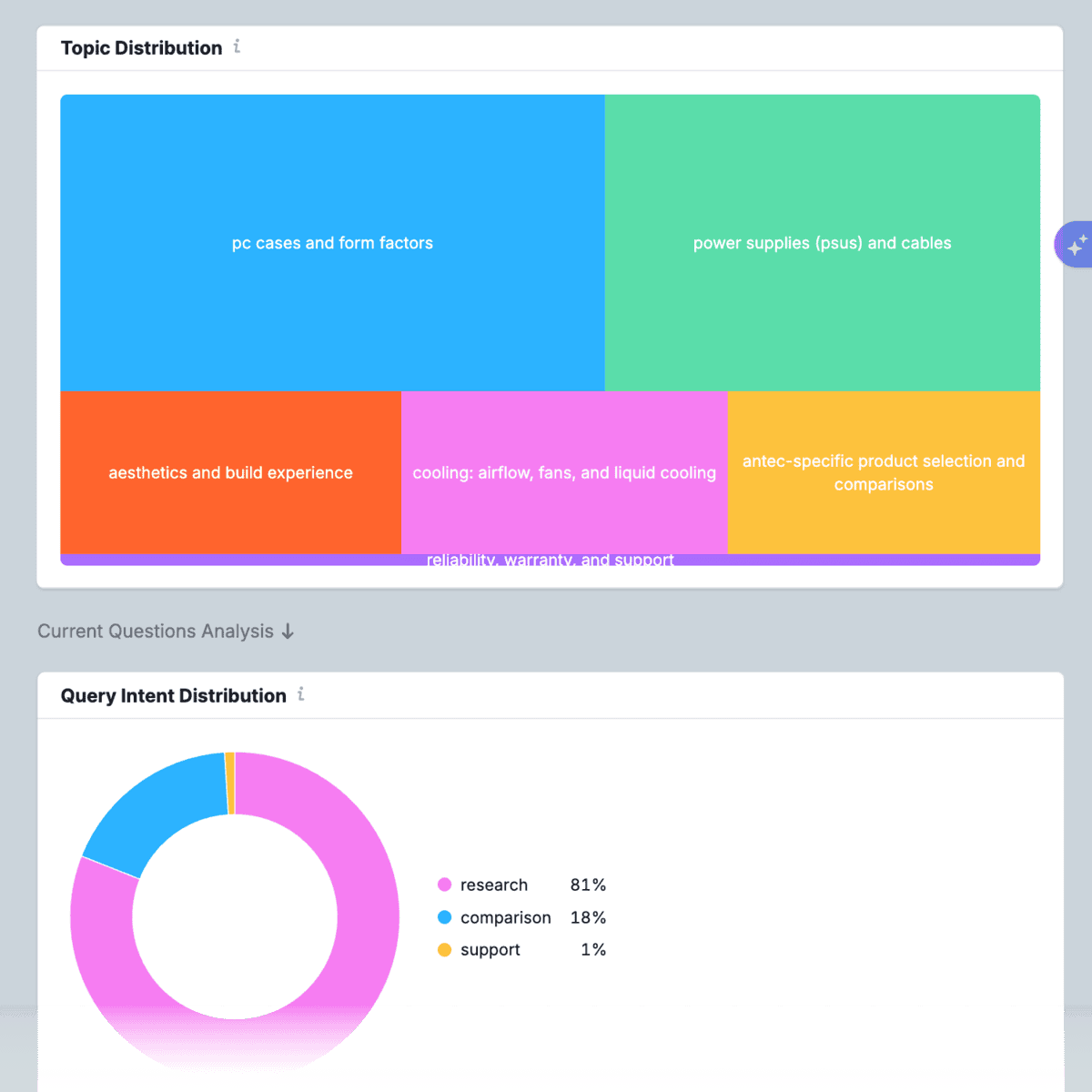
What really makes this report crucial can be found under “Query Topics.”
Here, AI Visibility Toolkit directly reveals the user queries that prompt LLMs to cite your brand. As an added bonus, it also presents a breakdown of the user intent behind each query topic.
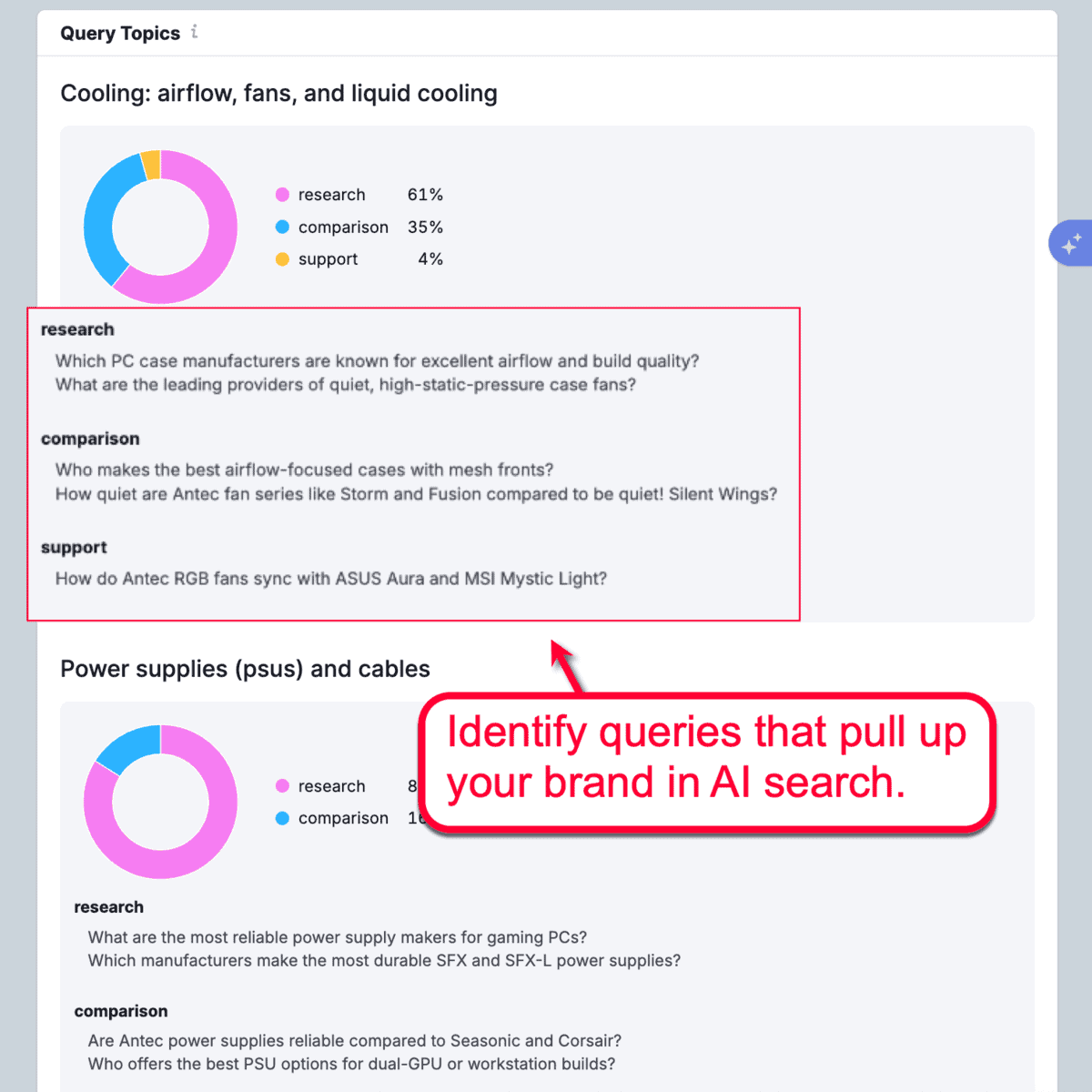
Of course, AI Visibility Toolkit includes actionable recommendations that will enable you to optimize for these queries.
This ensures you appear to more people who may need your products or services while giving you the opportunity to optimize your website content to match query intent.
Conclusion
Ready to improve your visibility and image in AI engines?
The good news is, you can start with a free Semrush SEO Toolkit trial to experience the platform firsthand. Keep in mind, the AI Visibility Toolkit is a separate product, and you’ll need to purchase it for full access to its AI-powered features.
Good luck!

Article by
Ankit Singla is a full-time blogger, YouTuber, author, and public speaker. He founded and leads Master Blogging. With over 13 years of blogging expertise, he has assisted numerous aspiring bloggers in achieving their dreams of creating successful blogs.

Ankit Singla is a full-time blogger, YouTuber, author, and public speaker. He founded and leads Master Blogging. With over 14 years of blogging expertise, he has assisted numerous aspiring bloggers in achieving their dreams of creating successful blogs.

Grow Your Brand with Semrush AI
Use the AI Visibility Toolkit to track and grow your brand online. For complete SEO and visibility tools, try Semrush One free for 14 days.



